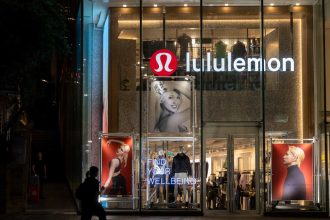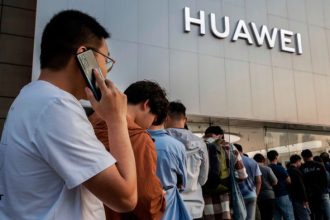Q3 earnings are a unique opportunity to put retail leaders on the spot about the future. They all do their best to avoid any comments, with lots of “it’s too soon to tell” or “we’ll update you on that with our year end results.” But every once in awhile, someone’s willing to speculate. And whether they’re willing to say anything, their Q3 results and full-year guidance often do almost as much talking.
Here are some of the results that came in this week.
Five Below
Five Below is one to watch because they are a discounter, and most analysts expect discounters to do really well in the second half of this year when (if?) consumers pull back on their spending. Five Below didn’t disappoint with sales growth of 14% and comp sales growth of 2.5%. The double-digit growth is driven largely by a big push behind store openings, which is why comp sales is a lower percent, and when you factor in inflation, 2.5% doesn’t seem quite as much as it might. However, CEO Joel Anderson notes that it’s the fourth consecutive quarter of positive comparable growth. He additionally commented, “We continue to see our customers focused on needs-based product, which for us is primarily seen in our consumables offering in the Candy World and beauty department.”
CFO
CFO
Dollar Tree
DLTR
DLTR
As another discounter, one with both Dollar Tree and Family Dollar (which serves an even more lower income shopper than Dollar Tree), Dollar Tree would also be a big of an early warning alarm over the state of the shopper. And they were sounding the alarm in Q3, as they reported healthy comps at Dollar Tree, but not so healthy comps at Family Dollar.
Chairman and CEO Rick Dreiling reported that Dollar Tree in particular picked up millions of new customers over the last 12 months, and at a higher income level ($125k+) than the typical shopper. Dollar Tree store comps were up 5.4%, traffic increasing 7% – but average ticket down 1.5%. This is an interesting echo of Five Below – prices are undeniably up, so a lower ticket price means fewer units offset by more tickets overall.
Family Dollar fared worse. Store comparables were up 2% year over year, traffic was up 1.4% and average ticket was down 0.7%. Dreiling pointed out that SNAP benefits have been on a steep decline quarter over quarter, down to a 23% year over year basis in Q3, the steepest decline so far. He commented, “Similar to what other retailers have reported, we experienced softening trends throughout the quarter, particularly in October, as lower income consumers responded to the accumulated impact of inflation and reduced government benefits, we saw a notable pullback in spending, particularly in higher margin discretionary categories.”
CFO Jeff Davis added that the company expects “shrink trends will remain unfavorable in the fourth quarter” as well.
Kroger
KR
KR
More solidly in the grocery segment, Kroger reported results that suggest that slowing inflation is finally making its way to consumers through lower commodity food prices. The company reported a slight decline in sales (0.5%) in Q3, but lowered its outlook for the rest of the year. They did comment that delivery sales were up 20% year over year on the quarter. Supporting delivery profitably will be one to watch in this segment.
UK Retailers Struggle More on the Earnings Front
Several UK retailers reported quarter or half-yearly results in the last week, and their trend was a bit different than in the US. Where non-discount retailers in the US were reporting revenue down, profits OK, UK retailers struggled with the reverse – revenue up, profits down.
Mulberry
Mulberry had promising results even in the UK, with revenue up 6% in the UK, and 34% internationally. The company is in the midst of a DTC transformation, to bolster its direct presence against soft demand coming from the wholesale sector – mostly department stores. US brands reported much the same in terms of wholesale.
Doc Martens
Doc Martens 1H results were a mixed bag of okay revenue but profits down. They cited the US division as the most challenging, currently. The company expects full-year revenue to decline by a high single-digit percentage year on year, driven mostly by the US.
Topps Tiles
Topps Tiles bucked the home improvement trend seen in the US. Sales were up 30% in stores compared to pre-pandemic levels. They attributed a fall in profit to taking a cost hit on inflation that they didn’t pass on to consumers. But they said that this pressure was stronger in the first half and had eased up somewhat in the second half.
Pets at Home
Pets at Home reported a similar earnings profile – revenue up, profit down – but they attributed their profitability decline to investment in a new distribution center and rebranding expenses. Like for like store sales were up 6.2% in the 28-week period to 12 October, which would not quite offset inflation.
The Bottom Line
The lowest-income consumers seem to be really showing the pressure. During the first half of the year in the US, there was a lot of concern about the end of pandemic-era benefits like a surge in SNAP dollars. That didn’t show up in consumer spending over the summer, but it does finally seem to be showing up now. That might give us a hint about student loan repayments – with those resuming in October/November, I expected that to show up right away. But if SNAP is any indicator, it may take a quarter or two before the impact becomes much more visible.
It’s also very interesting to contrast US vs. UK retailers and their choices. In the US, retailers are reporting revenue up, units down, but have managed earnings very closely, and even are starting to cite lower supply costs as a reason for why they expect earnings to hold no matter what the consumer does. In the UK, revenue is up but earnings are down as some retailers are trying to stop passing on additional price increases to consumers. Some of that appears to be in anticipation of relief coming in an easing of inflation, but the UK has many more frequent resets of both minimum living wages and interest and tax rates that businesses (and consumers face). Cost of living increases in wages injects more money into the economy, which risks keeping inflation high as more spending chases goods. But it also creates the potential for more structural inflation though additional rises in costs.
Both countries face the same external pressures, but how it ultimately plays out for retail could vary drastically between the two.
Read the full article here





